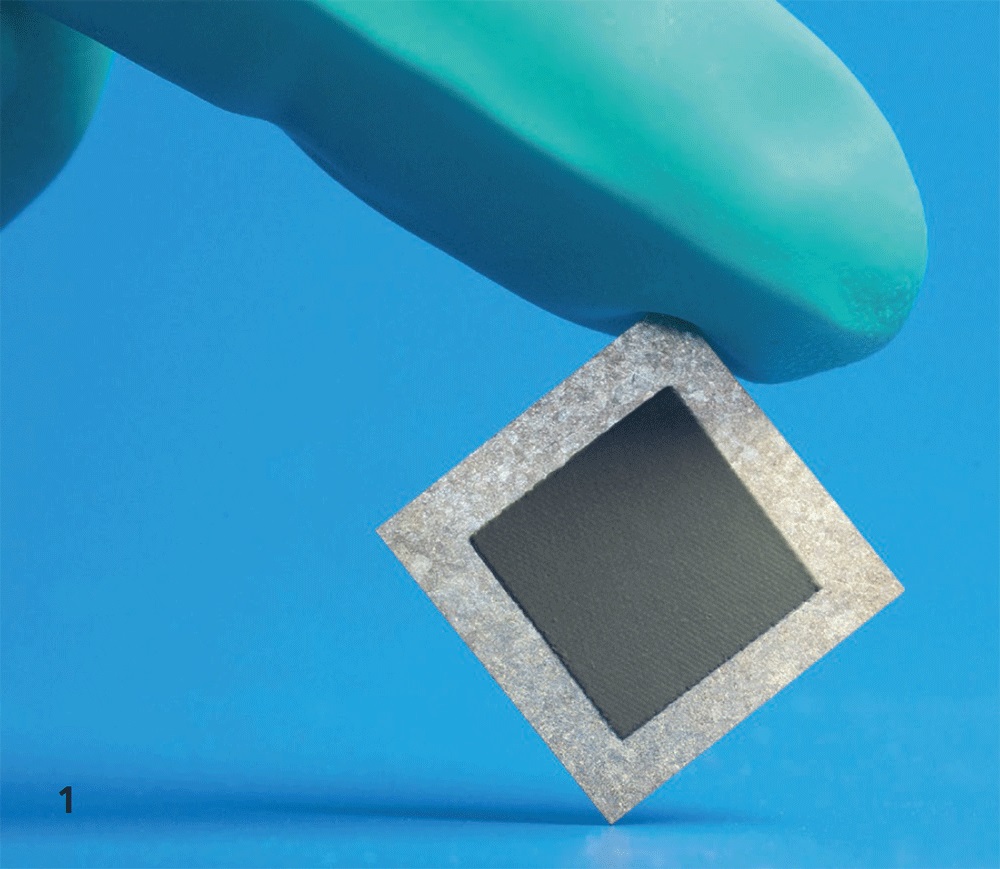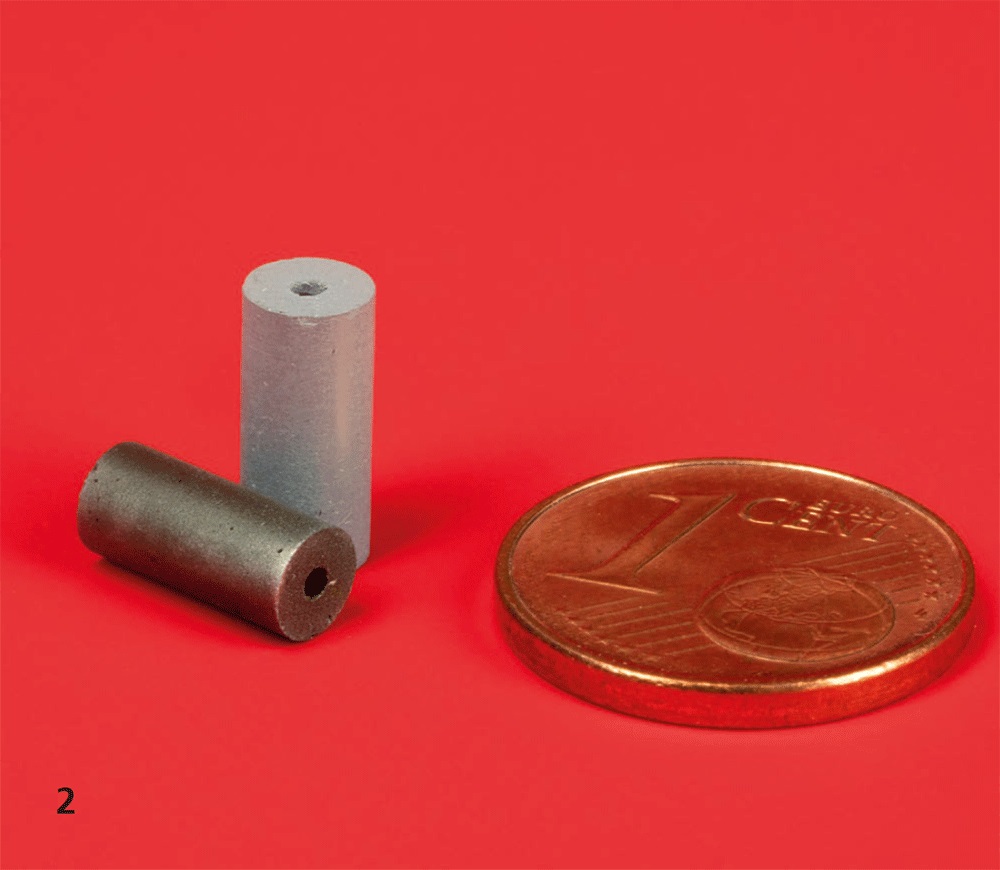
Electron-emitting ceramics for satellite propulsion
Current research



Electride materials are used as cathodes in electron-emitting assemblies, e.g. in the ion propulsion of satellites or in therm-ionic converters. Their special property is a low work function for electrons, which means that notable electron currents can be generated in an electric field. Due to their material-specific work function for electrons and Richardson‘s constant, established electride materials, such as LaB6 and BaO:W, only emit electrons to a useful extent at temperatures above 1000 °C.
Therefore, the aim of worldwide research is to develop electride materials that enable an application-relevant emission of elec-trons already at temperatures significantly below 1000 °C. The oxide ceramic material C12A7 (12CaO·7Al2O3) with its special, cage-like lattice structure exhibits defect states with a concentration of mobile electrons greater than 1021 electrons per cm3. At Fraunhofer IKTS, this material can be synthesized in a scaled manner and finds application as a sintered body or printed layer. A work function of 2.37 eV and a Richardson constant of over 8 Acm-² K-² could be measured on sintered hollow cathodes made of pure C12A7. Because of these properties, the electride C12A7 is suitable for use as an electron emitter at temperatures below 1000 °C. This results in considerable advantages for the constructive and electrical integration, for example, in propulsion systems of satellites.
The growing number of communication and observation satellites in Earth orbit increases the probability of collisions and the risk of incalculable failures and their consequences.
In the E.T. PACK project, which is funded by the European Union, electrodynamic and propellant-free propulsion systems (deorbit kits) are being developed to enable the controlled removal of retired satellites from orbit. For this purpose, the electride C12A7 is contacted as a thick film on a metallic tape (Figure 1) and attached to the satellite as a coil. At the end of its service life, this tether is unwound, slowing down the satellite through the electrodynamic effect by absorbing electrons from the plasma in one segment and releasing them elsewhere through thermionic emissions. The resulting electric current, in conjunction with the earth‘s magnetic field and the satellite‘s direction of flight, causes a Lorentz force that constantly pulls the satellite towards the earth.
In the EU project iFACT, hollow cathodes made of C12A7 are being developed for novel, more effective ion propulsion systems for satellites based on iodine instead of xenon (Figure 2). The hollow cathodes are intended to ionize vaporized iodine and thus generate an ion current in an electric field that can be used for the position control of satellites. C12A7 promises improved stability against the iodine ions and should thus ensure a long service life.
Supported by

